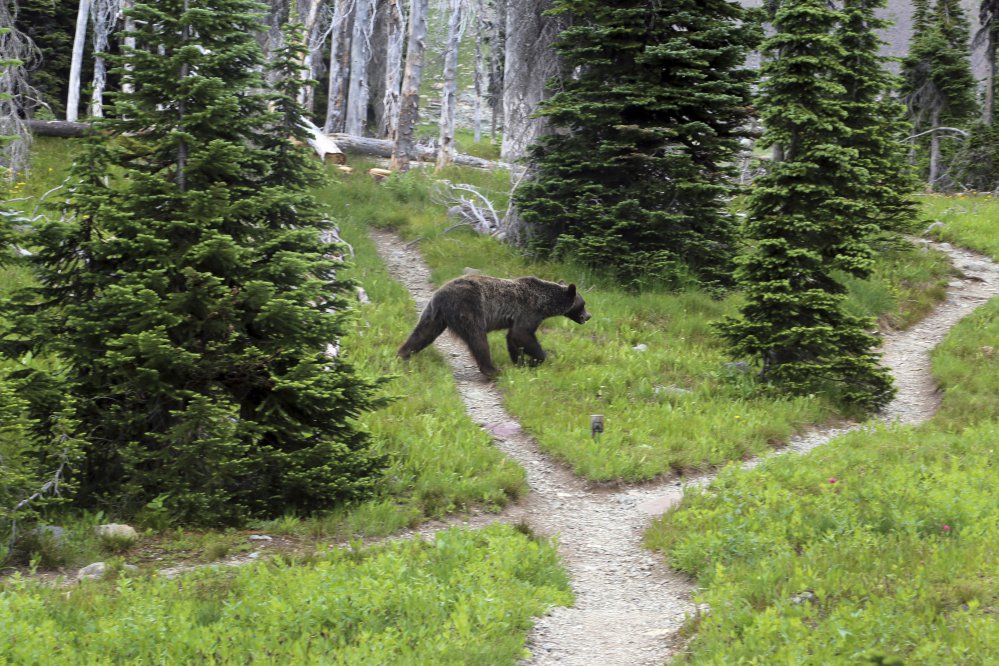HELENA, Mont. – On the heels of lifting protections for Yellowstone-area grizzly bears the U.S. government plans to consider the same action for bruins in northwestern Montana, home to the largest group of grizzlies in the Lower 48.
A proposal to lift protections could come next year, U.S. Fish and Wildlife grizzly recovery coordinator Hilary Cooley told Montana lawmakers Thursday. It would take another year for such a proposal to be finalized.
Hunters and trappers widely exterminated grizzlies across much of the U.S. early last century. But since they gained threatened species protections in 1975, the animals have repopulated a huge area known as the Northern Continental Divide Ecosystem.
The area that includes Glacier National Park and the Bob Marshall Wilderness now has about 1,000 bears. Biologists say the animals have doubled their distribution in the region and now occupy 22,000 square miles (56,000 square kilometers.)
In recent years, grizzlies have pushed out of the mountains around Glacier and onto central Montana’s plains, where agriculture dominates the landscape and conflicts between grizzlies and livestock have increased.
Similar conflicts have occurred in communities around Yellowstone National Park. Facing increased pressure from state officials, the federal government in July lifted protections on an estimated 700 grizzlies in the Yellowstone region of Idaho, Montana and Wyoming.
The action transferred jurisdiction over grizzlies to state game agencies, possibly opening the door to trophy hunts in the future.
Wildlife advocates and American Indian tribes have filed multiple lawsuits asking federal courts to restore protections for Yellowstone-area grizzlies. They worry the bears’ recovery will nosedive without U.S. government oversight.
Grizzlies occupy three other areas in the Lower 48: about 40 bears are in the Cabinet Yaak area of Montana; 70 to 80 in the Selkirk Mountains of Idaho, Washington and British Columbia; and fewer than 20 are in the North Cascades of central Washington, according to the Interagency Grizzly Bear Committee.
Grizzlies are not federally protected in Alaska, which has tens of thousands of the animals and holds annual public hunts.
Send questions/comments to the editors.


